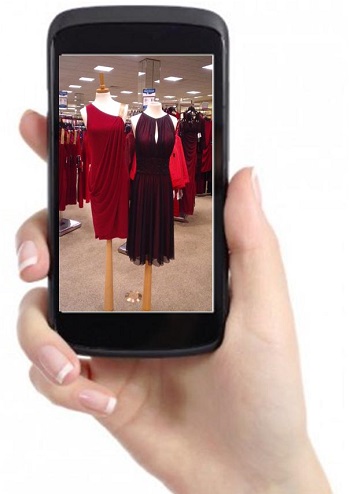More research indicates that mobile shoppers do their research on smartphones and tablets, but buy elsewhere.
According to the results of a survey that was conducted by TimeTrade, a consumer experience specialist, m-commerce is alive and well, but consumers are not necessarily using it for making purchases as much as they are investigating the products, services, companies, and brands, that interest them.
After they have informed themselves over mobile commerce channels, shoppers will make purchases elsewhere.
The information that consumers are obtaining over m-commerce is usually found over digital and social channels of different forms. The research looked into the buying habits of shoppers, with the intention of discovering some insight that would allow retailers to be able to enhance and polish the experience that they provide to their customers. What the research results have shown was that retailers are discovering that the more personalized the in-store experience can be, the better and more lasting the impression and brand loyalty they crate among shoppers.
This m-commerce trend has caused retailers that had previously been online-only to open up brick and mortar shops.
 Equally, consumers have also stated that when it comes to their own shopping habits, they would still rather go to a physical store so that they will be able to check out the actual product and make their final purchasing decisions. They do enjoy the opportunity to obtain more information about an item that they are considering, by using their smartphones or tablets, but after they have informed themselves, they will often move on to the brick and mortar shop to complete the transaction.
Equally, consumers have also stated that when it comes to their own shopping habits, they would still rather go to a physical store so that they will be able to check out the actual product and make their final purchasing decisions. They do enjoy the opportunity to obtain more information about an item that they are considering, by using their smartphones or tablets, but after they have informed themselves, they will often move on to the brick and mortar shop to complete the transaction.
Among the respondents to this mobile commerce survey, 65 percent said that if an item that they want to buy is available at a store that is located nearby, they would prefer to make the trip to that location in order to shop, instead of placing an order over a smartphone or tablet. The primary reason that was given for that preference was that they wanted to be able to “touch and feel” the product before buying.
The respondents also said that when they are seeking to make a purchase, only 13 percent would actually buy over m-commerce, while 42 percent of them had never actually bought anything over a mobile device.

 The third most common mobile commerce category was gaming products, which were purchased by 19 percent of device owning Europeans. Other shopping categories included groceries (17 percent), music (16 percent) and travel (16 percent). All of this data was released in the ING International Survey on Mobile Banking, which was designed to take a closer look at the m-commerce habits of over 10,000 mobile device using consumers throughout Europe.
The third most common mobile commerce category was gaming products, which were purchased by 19 percent of device owning Europeans. Other shopping categories included groceries (17 percent), music (16 percent) and travel (16 percent). All of this data was released in the ING International Survey on Mobile Banking, which was designed to take a closer look at the m-commerce habits of over 10,000 mobile device using consumers throughout Europe.